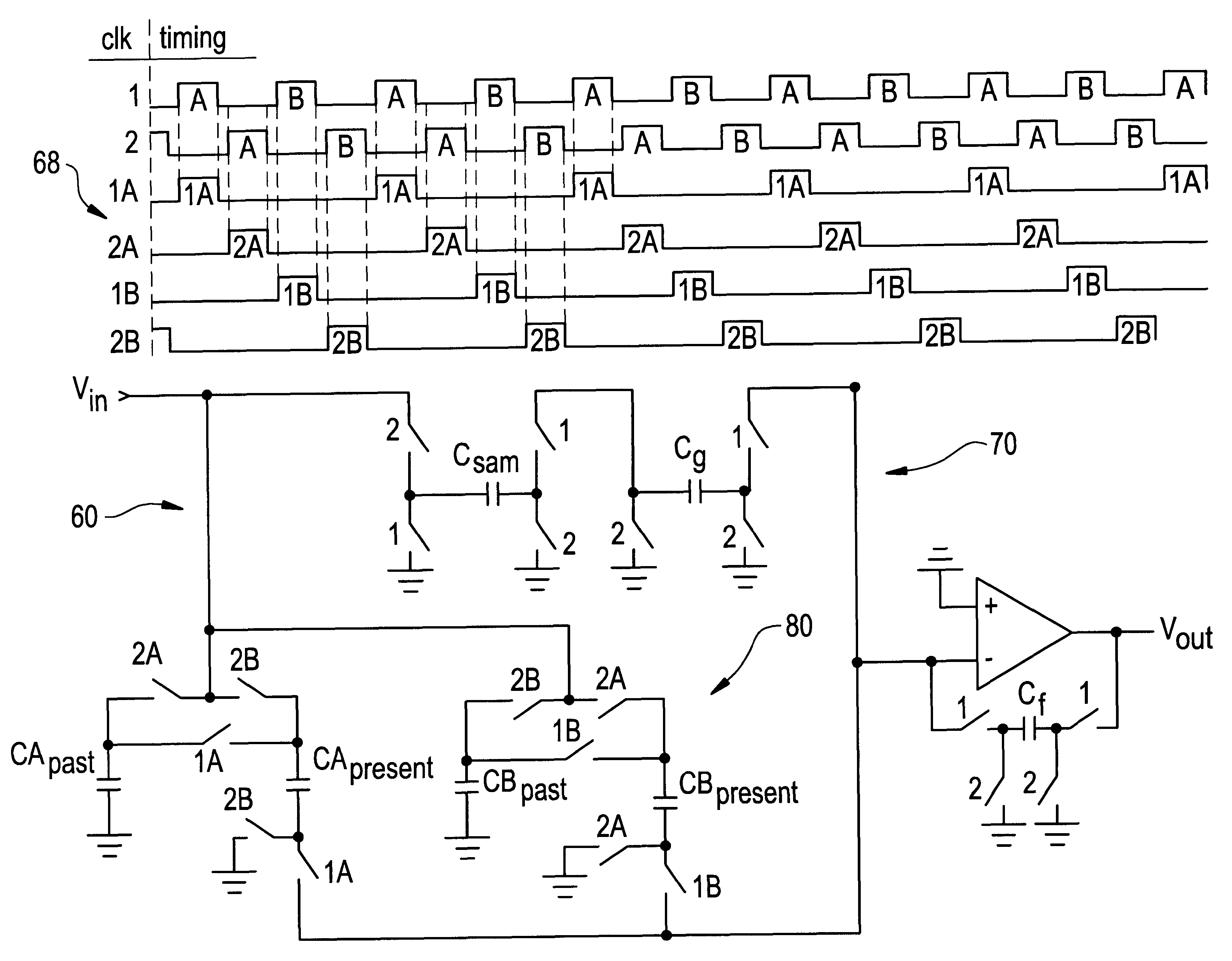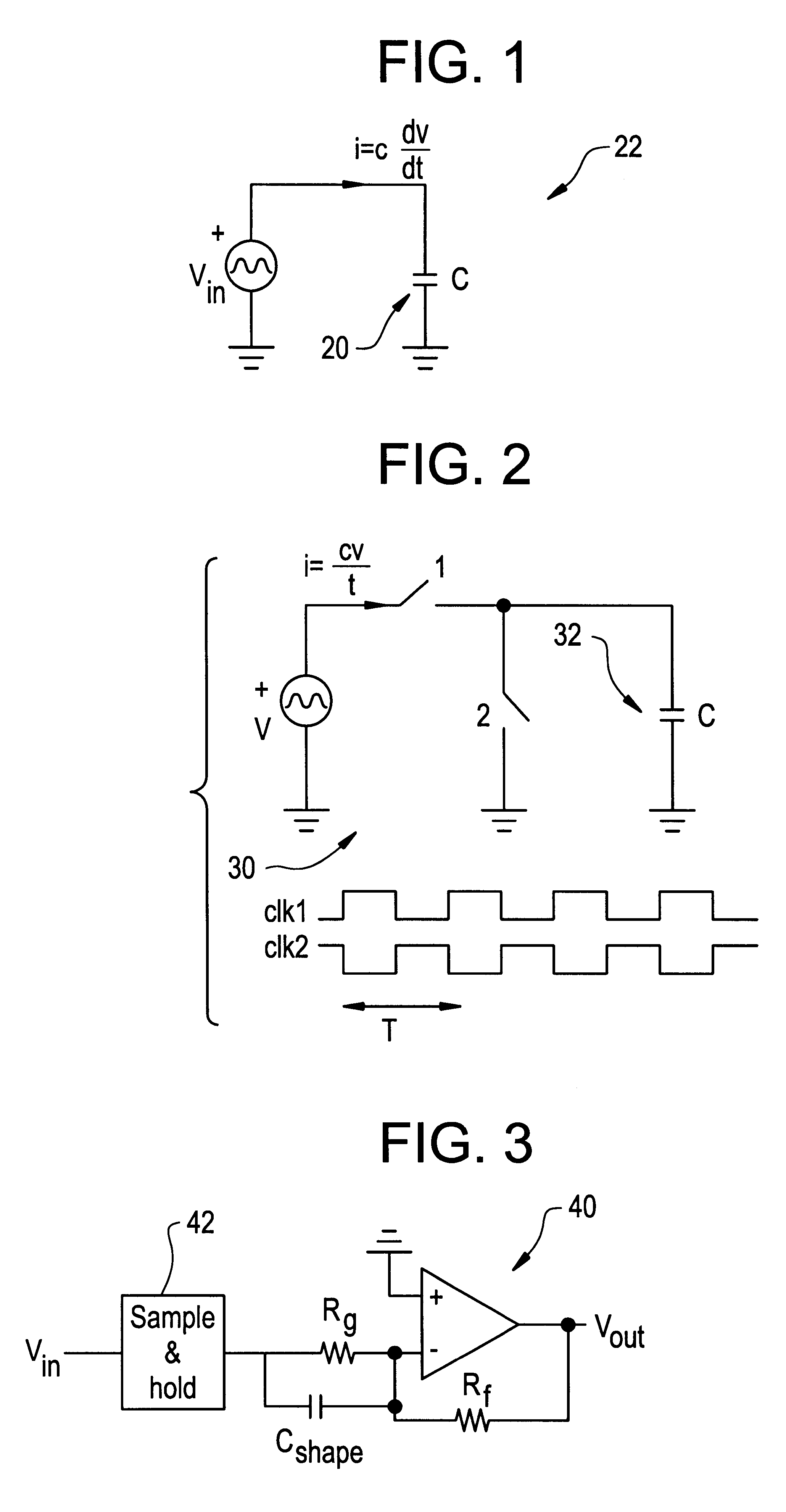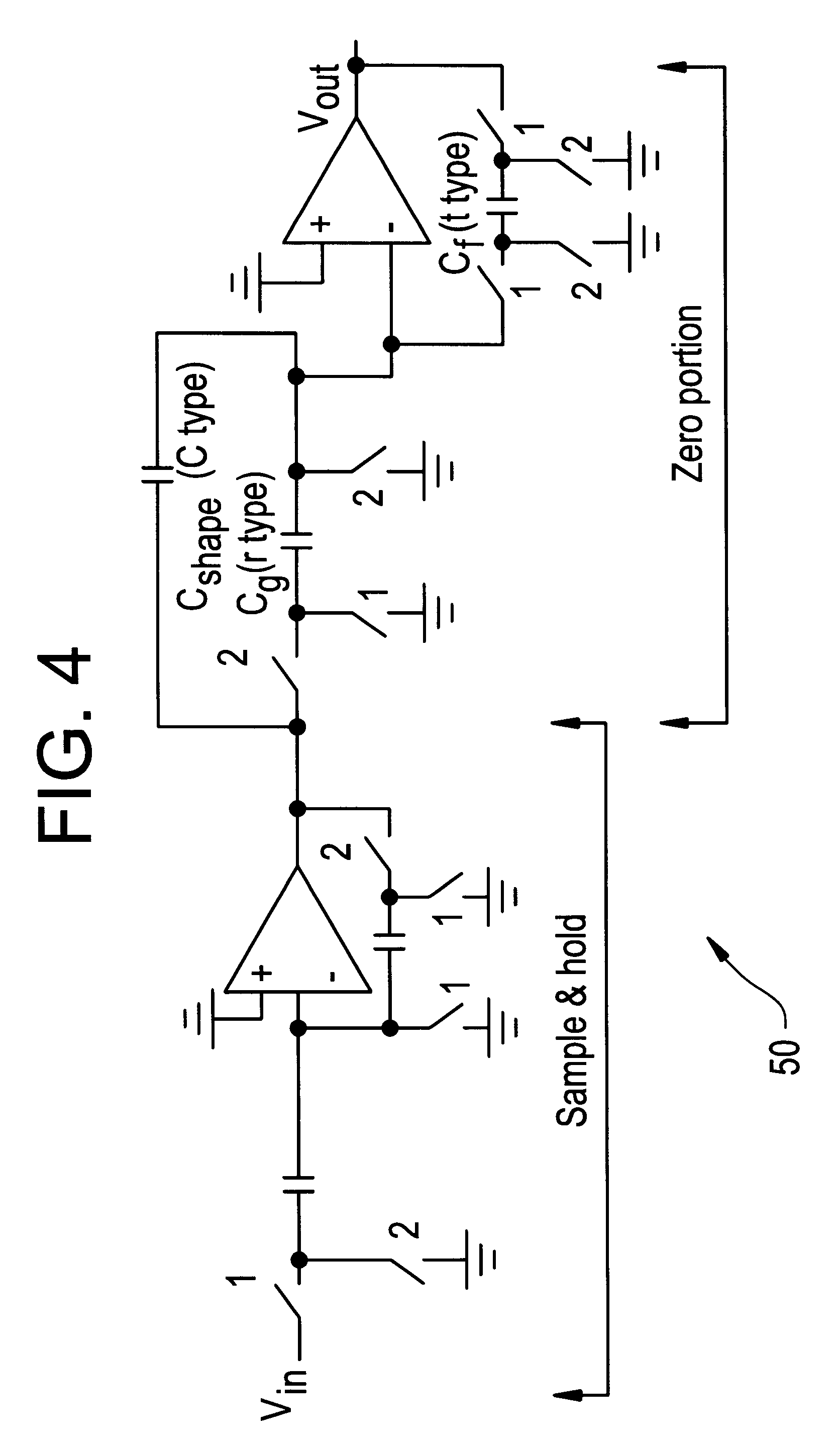Passive sample and hold in an active switched capacitor circuit
a switched capacitor and passive sample technology, applied in the field of switching capacitor circuits, can solve the problems of increasing the critical issue of package power dissipation, requiring a large area, and requiring power-consuming operational amplifiers, and achieve the effect of less area
- Summary
- Abstract
- Description
- Claims
- Application Information
AI Technical Summary
Benefits of technology
Problems solved by technology
Method used
Image
Examples
Embodiment Construction
FIG. 5 illustrates a switched capacitor circuit 60 including a sample and hold in accordance with an embodiment of the present invention. The sample and hold does not require a pair of large area, power-consuming operational amplifiers and, as such, consumes less power and less area.
Also shown in FIG. 5 are waveforms 68 corresponding to clock signals which control the switches included in the circuit. Specifically, waveforms corresponding to two clock signals, "1" and "2", are illustrated, and waveforms corresponding to other four signals, "1A" , "2A", "1B" and "2B", that are derived from clock signals "1" and "2" are shown. Preferably, clock signals "1" and "2" are approximately 48% duty cycle, non-overlapping clock signals, and clock signals "1A", "2A", "1B" and "2B" are approximately 24% duty cycle, non-overlapping clock signals derived from clock signals "1" and "2". It should be noted that the "B" in "1B" and "2B" does not indicate a complement signal or "bar." The circuit illu...
PUM
 Login to View More
Login to View More Abstract
Description
Claims
Application Information
 Login to View More
Login to View More - R&D
- Intellectual Property
- Life Sciences
- Materials
- Tech Scout
- Unparalleled Data Quality
- Higher Quality Content
- 60% Fewer Hallucinations
Browse by: Latest US Patents, China's latest patents, Technical Efficacy Thesaurus, Application Domain, Technology Topic, Popular Technical Reports.
© 2025 PatSnap. All rights reserved.Legal|Privacy policy|Modern Slavery Act Transparency Statement|Sitemap|About US| Contact US: help@patsnap.com



